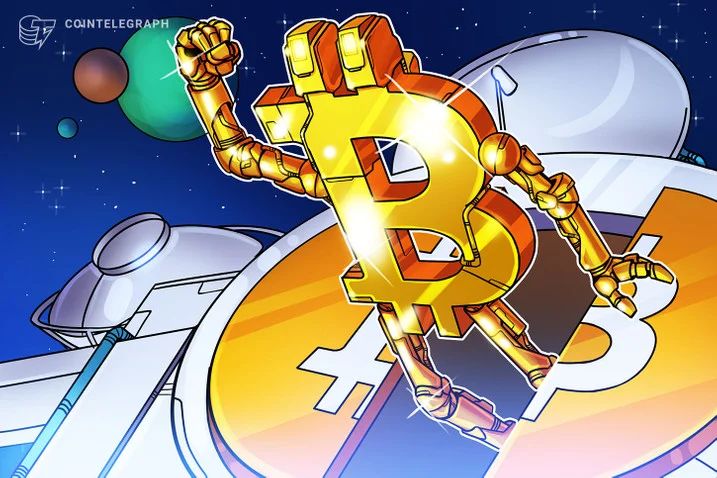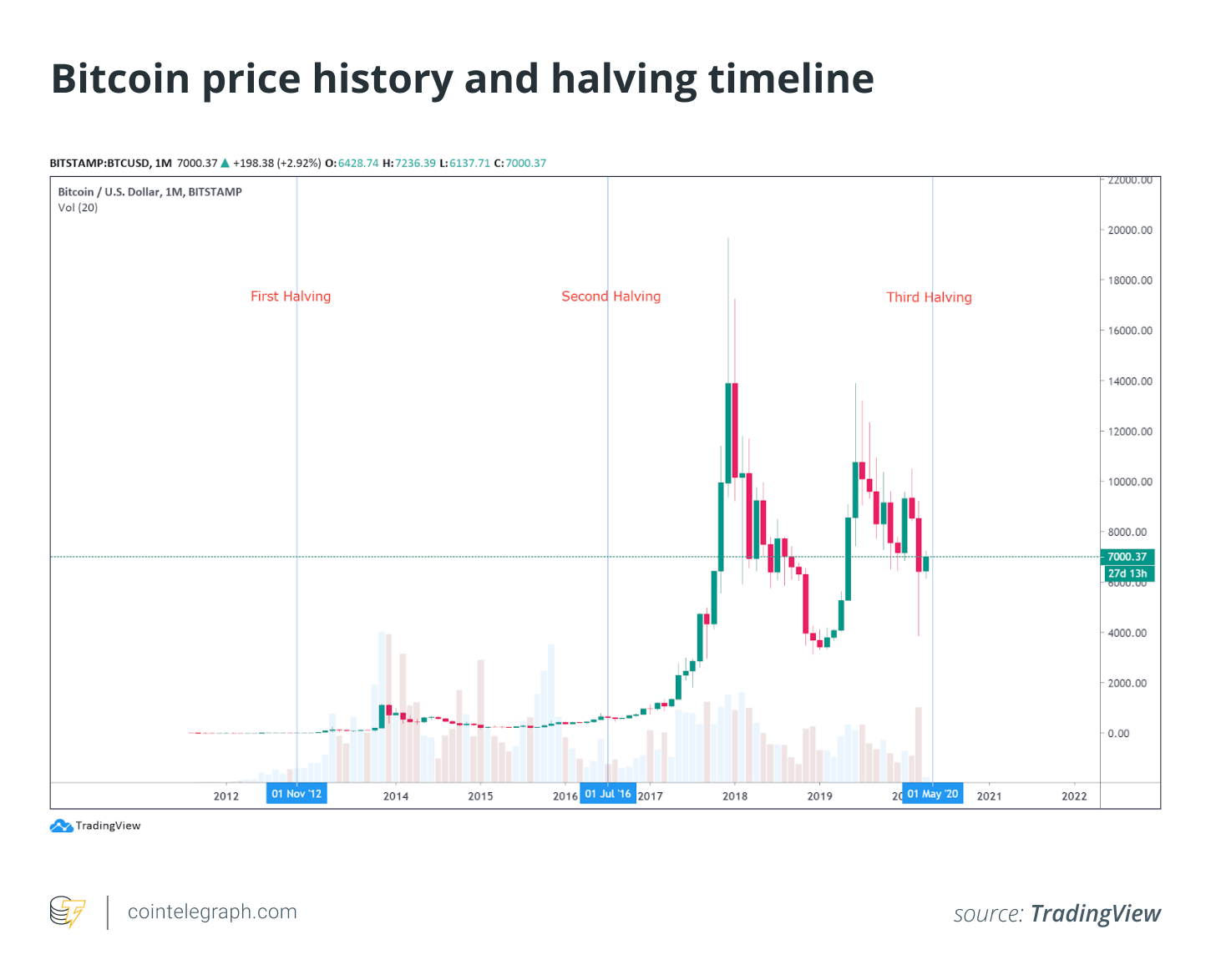Looking back at the halving in the past: the reason why Bitcoin prices will soar immediately is flawed
Past data shows that the reason for the bitcoin price soaring immediately after halving in May is flawed.

For a long time, the halving of Bitcoin ( BTC ) block rewards has been regarded as an optimistic factor driving the short-term price trend of Bitcoin in the first half of 2020. However, historical data shows that halving Bitcoin production does not necessarily coincide with the immediate surge in Bitcoin prices.
On the Bitcoin network, miners package blocks that record Bitcoin transactions and use computing power to verify and confirm payment data. Through large mining centers with ASIC mining chips and precision equipment, miners consume a lot of power and pay very high maintenance costs to mine Bitcoin. Individuals or small miners can mine Bitcoin through the mining pool, that is, a group of miners contribute Bitcoin to mine Bitcoin blocks.
- Ethereum will devour the settlement layer of Wall Street
- Cai Weide: Retired Internet, Newly Constructed Interlinkage Network
- BIS: The new crown epidemic brings new inspiration to the central bank's digital currency design
The reward for digging bitcoin every four years is halved, reducing the income of miners by 50%. Miners usually prepare six to twelve months of cash reserves as a buffer to ensure that even if the price of Bitcoin drops after halving, their business can be maintained.
What do historical data say?
On November 28, 2012, the Bitcoin network halved for the first time. At the time, only a few mainstream cryptocurrency exchanges could trade Bitcoin, and buying Bitcoin was still relatively difficult . Therefore, many analysts believe that market data before 2016 (when the number of exchanges was limited) may not be reliable.

BTC USDT monthly chart. Source: TradingView
After halving for the first time in 2012, it took about 11 months for the price of Bitcoin to enter the parabolic upward phase to ensure continued upward momentum. In November 2012, the price of Bitcoin on the Bitstamp exchange hovered around $ 12. In November 2013, the price of Bitcoin climbed to US $ 1,100, an increase of 7,562%.
The second halving of the Bitcoin network occurred in July 2016. After the price of Bitcoin dropped sharply from $ 1,100, it stabilized at about $ 600. Then, in May 2017, just 11 months after the halving occurred (as in 2012), the bitcoin price began to rebound strongly. Therefore, the past two halvings indicate that the price of Bitcoin tends to rise vertically 10 to 11 months after the halving occurs, but not immediately after the halving of Bitcoin.
Why Bitcoin price will rebound after halving for months
Large miners tend to reserve up to 12 months of cash as a buffer before the block reward is halved, because there is always a risk of BTC prices falling after the mining revenue decreases. However, small miners do not have the financial resources or resources to prepare for the halving in advance.
Various data (including Digital Assets data 21-Day Miner's Rolling Inventory) indicate that the number of BTC sold by miners in recent weeks has exceeded their mining volume. As the large investor Joe007 (probably the largest whale on Bitfinex) has hinted, the possibility of miners selling BTC has not yet been digested by the market.
As small miners continue to sell their bitcoin, the cryptocurrency trading market is facing increasing selling pressure. Some miners tend to sell crypto assets through the OTC market. However, over time, OTC transaction data will also be reflected in the cryptocurrency trading market.
In mid-March, Joe007 warned that with the halving approaching, "over-leveraged miners" will be incredibly hurt, which may cause some miners to surrender and eventually go through exchanges and over-the-counter trading platforms Sell Bitcoin.
Why do investors predict that the price of Bitcoin will rise after halving?
It is widely expected that the bitcoin price will increase in the short term after the block reward is halved in May, as John Todaro, head of research at TradeBlock, said in early 2020 that bitcoin The breakeven price of coin mining will rise to between 12,000 and 15,000 USD. Many investors speculate that since the mining cost of Bitcoin is $ 12,000, it is logical to increase the price of Bitcoin to more than $ 12,000 after halving it.
Although the price of Bitcoin may eventually enter the range of 12,000 to 15,000 US dollars in the future, large miners are preparing a large amount of cash buffer to deal with the possible price drop of Bitcoin after the halving.
Todaro's research also found that large companies such as Bitmain and Jianan Technology have been developing newer mining equipment, which is also a variable in calculating the mining breakeven price. According to TradeBlock research, efficient mining equipment and cheaper electricity and resources can greatly reduce the breakeven price of mining, even after halving.
For large miners with buffered cash and resources to quickly acquire new mining equipment, automatic adjustments ultimately reduce the difficulty of mining making it possible to maintain their business in the first few months after halving.
What will happen to Bitcoin next?
If bitcoin's price trend follows historical performance, as shown in 2012 and 2016, then bitcoin should rise sharply in mid-2021, 10 to 11 months before the halving in May. Therefore, in the coming months, the price of Bitcoin is likely to remain well below the mining breakeven price.
However, according to historical data and on-chain research, the hash rate of the Bitcoin network may reflect the decline in mining revenue, resulting in a "death spiral", which will seriously reduce the security of the Bitcoin network. This popular theory has not been proven to be accurate. Although there is still a month before the halving, the hash rate of the Bitcoin network has only dropped to the level of December 2019. Since the hash rate of the Bitcoin network has been hitting an all-time high in the past two years, it is unlikely that the halving of Bitcoin will have a significant huge negative impact on the hash rate.

Source: Blockchain.com
A BitMEX study found various possible situations, such as: "Half halving has a greater impact on the network hash rate, resulting in a 47% drop in hash rate", or "Half halving only causes the network hash rate to drop by 12" % ".
This means that even if the price of Bitcoin is still lower than the cost of mining, and maintain this status for the next three to four months, and considering that large miners tend to prepare in advance and the hash rate rarely drops significantly, so Before the hash rate begins to reflect the mining cost, the hash rate of the Bitcoin network may remain stable.
A bitcoin halving may seriously affect overly leveraged small miners in the short term, just as a bitcoin price drop will severely affect overly leveraged traders, because a halving is unlikely to immediately trigger a surge in bitcoin prices. But in the medium to long term, it is expected that the fundamentals of the Bitcoin network and mining ecosystem will remain strong.
Despite the sluggish market and the stagnation of the cryptocurrency market, small and large acquisitions in the mining sector are still underway, such as the acquisition of a Bitcoin mining center in Quebec, Canada for $ 2.8 million on March 30, 2020. This indicates that miners expect the global cryptocurrency mining industry to decline in the short term, but will recover in the long run.
Original link: https://cointelegraph.cn.com/news/past-halvings-in-review-case-for-an-immediate-bitcoin-upsurge-is-flawed
We will continue to update Blocking; if you have any questions or suggestions, please contact us!
Was this article helpful?
93 out of 132 found this helpful
Related articles
- The US dollar is still the king of currency, but stablecoins will lead the rise of digital currencies
- 35 foreign-funded companies have patent cards on blockchain in China, with Microsoft, Oracle and Wal-Mart in the list
- People's Financial Review: Is virtual currency a safe-haven asset beyond gold and silver? fake!
- Economic Daily: How deep is the “water” of virtual currency trading? The plunge is just one of the many risks behind it
- Cao Yin: An economic crisis or an important opportunity for the rise of DeFi in an epidemic
- Governor of the United Bank of the Philippines: The new crown virus epidemic will accelerate the adoption of central bank digital currency
- Viewing the privacy of the cryptocurrency era from the "room N incident": most cryptocurrencies in the market are not truly anonymous






